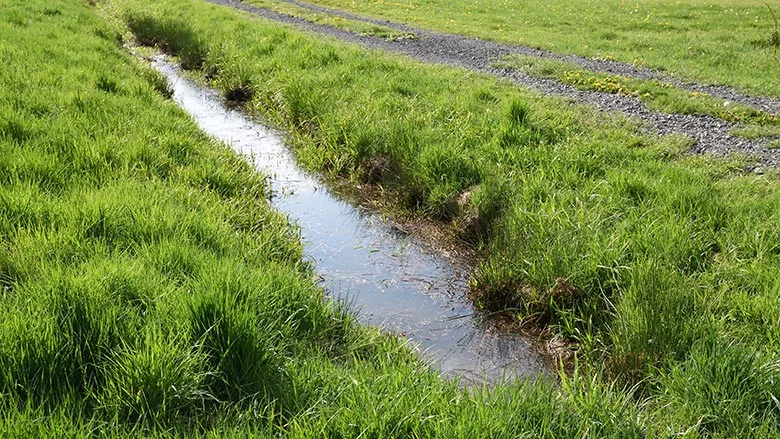Update to WOTUS ‘Raises a lot of Uncertainty’
Expert: Rule Still Not the Clarity Business, Property Owners Need

Does this ditch have a “significant nexus” to waters of the United States? We can’t tell by looking at it, either.
Source: Getty Images
We’ve talked often in The Driller’s pages, videos and podcasts about “waters of the U.S.” (WOTUS). The concept matters to anyone working with water or working hard to avoid contaminating water. Put simply, anything considered WOTUS falls under the Clean Water Act, which prohibits discharge into said waters.
On Dec. 30, 2022, the Environmental Protection Agency and the U.S. Army released their updated definition of WOTUS after months of stakeholder input. Think of WOTUS as identifying the edges of the Clean Water Act when it comes to federal jurisdiction. Of course, we all try to work as cleanly as possible. But drilling fluids, oil and hydraulic fluid leaks happen. Disposal has to happen. Drilling is messy. Unexpected things happen when your work involves discovering the unknown. The Clean Water Act can touch all types of work drillers do. Changing the definition of WOTUS has far-reaching effects.
So, what does the new definition say?
“The only thing we can say with any certainty about this new rule is that it raises a lot of uncertainty,” says Jesse Richardson, an expert on water law and advisor to the Water Systems Council. I’ll hit highlights here, but listen to the Driller Newscast episode 44 where Richardson goes into plenty of detail on the new rule.
“It appears that the Biden Administration tried to split the difference between the Obama rule and the Trump rule,” Richardson adds.
However, he likens the new definition to the blurry one in the wake of the 2006 Rapanos v. United States decision at the U.S. Supreme Court. A majority of that court sided with the plaintiff, who was prosecuted after filling in a wetland the EPA considered WOTUS. That same majority, however, split when it came to proposing a standard to use as a guidepost for future disputes.
“Remember that the law was so confusing after Rapanos that two administrations tried to clarify things,” Richardson says.
You’ll hear phrases like “continuous surface connection” and “significant nexus” in discussions of WOTUS. Those two differing standards emerged from the court’s Rapanos ruling. This latest WOTUS rule, in effect, says that if water has a continuous surface connection or a significant nexus to clearly defined waters of the United States, then it also falls under the Clean Water Act.
A surface connection — maybe a ditch running into a stream — seems obvious. The major issue for groundwater professionals comes from the fuzziness of the phrase “significant nexus.” At least one court, Richardson says, has ruled groundwater with a “significant nexus” to surface water falls under the definition of WOTUS.
The rule released Dec. 30 fails to clarify the issue when it comes to groundwater.
Now, to complicate things, all of this rulemaking comes amid another Supreme Court case that could effectively rip up the new rule. A decision in the Sacket v. EPA case, which I’ve written about in this space before, could send the Biden Administration back to the drawing board for a definition of WOTUS. A ruling in that case is expected within months.
Our water deserves protection. Our businesses deserve clarity.
“Unfortunately, I don’t think this is it,” Richardson says.
What do you think? How would you define WOTUS if it were up to you? Have you followed the process as the latest definition developed? Send an email to verduscoj@bnpmedia.com.
Stay safe out there, drillers.
Step Up to the Mic
Interesting project? Industry wisdom to share? Email verduscoj@bnpmedia.com to be considered for a guest spot on the Driller Newscast.
Looking for a reprint of this article?
From high-res PDFs to custom plaques, order your copy today!


